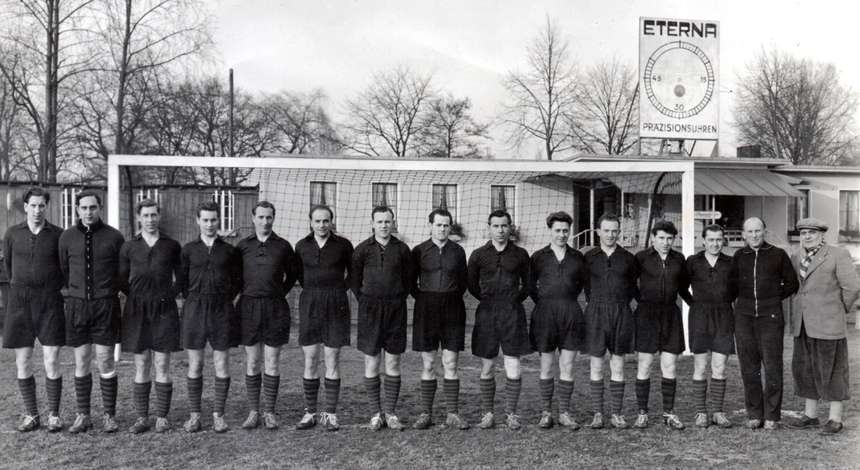
The team from Cologne were unlucky that Heinz Goffart had to go off injured in the first 15 minutes and in the second half he "played" at right back with his knee bandaged. There were no substitutions back then meaning that an injured player had to either leave the pitch or carry on as best they could. With that advantage, the Werkself took the lead before half-time with the former Köln player Walter Nußbaum, who was pulling the strings in midfield, in the team. From a cross by the right winger Waldemar Langwagen, Leverkusen's first international for the DFB B team, centre forward Fritz Tiede made it 1-0 with a wonderful header.
The Bayer 04 fans are joyful when left winger Horst Schultz scores from a tight angle to make it 2-0 two minutes into the second half. However, Herbert Dörner pulls a goal back two minutes later after a solo run to make it 2-1. Under hectic pressure from FC Köln, the Werkself defend with eleven men and then counter-attack with four, five or six players after regaining possession. And if a Köln player shoots then Fredi Mutz, the goalkeeper with a thousand hands, is on hand to make the save.
The giant in the Bayer 04 goal has been in outstanding form for weeks. "Schäfer shoots, Mutz punches, a Stollenwerk rocket, Mutz saves with one hand, Röhrig hits a low shot, Mutz saves with his foot, Müller with a follow-up shot, Mutz holds on!" (Kölner Stadt-Anzeiger 22.11.1954). And all that in just 15 seconds. But with ten men, the Red and Whites are unable to overcome the outstanding Bayer team. Leo Bering scores to make it 3-1 after clinically exploiting a poor punch from the Köln keeper Klaus Hartenstein. And suddenly, unbelievable today, the whole of the Köln support gets behind Leverkusen. Every Werkself attack is supported loudly by the whole stadium and the goal sealing the win, scored by Waldemar Langwagen on 69 minutes, is celebrated frenetically. Bayer 04 Leverkusen made a lasting impression and at the end of the season third place is just not enough to qualify for the German championship finals but it is the first time finishing ahead of FC Köln in the final table.
Related News
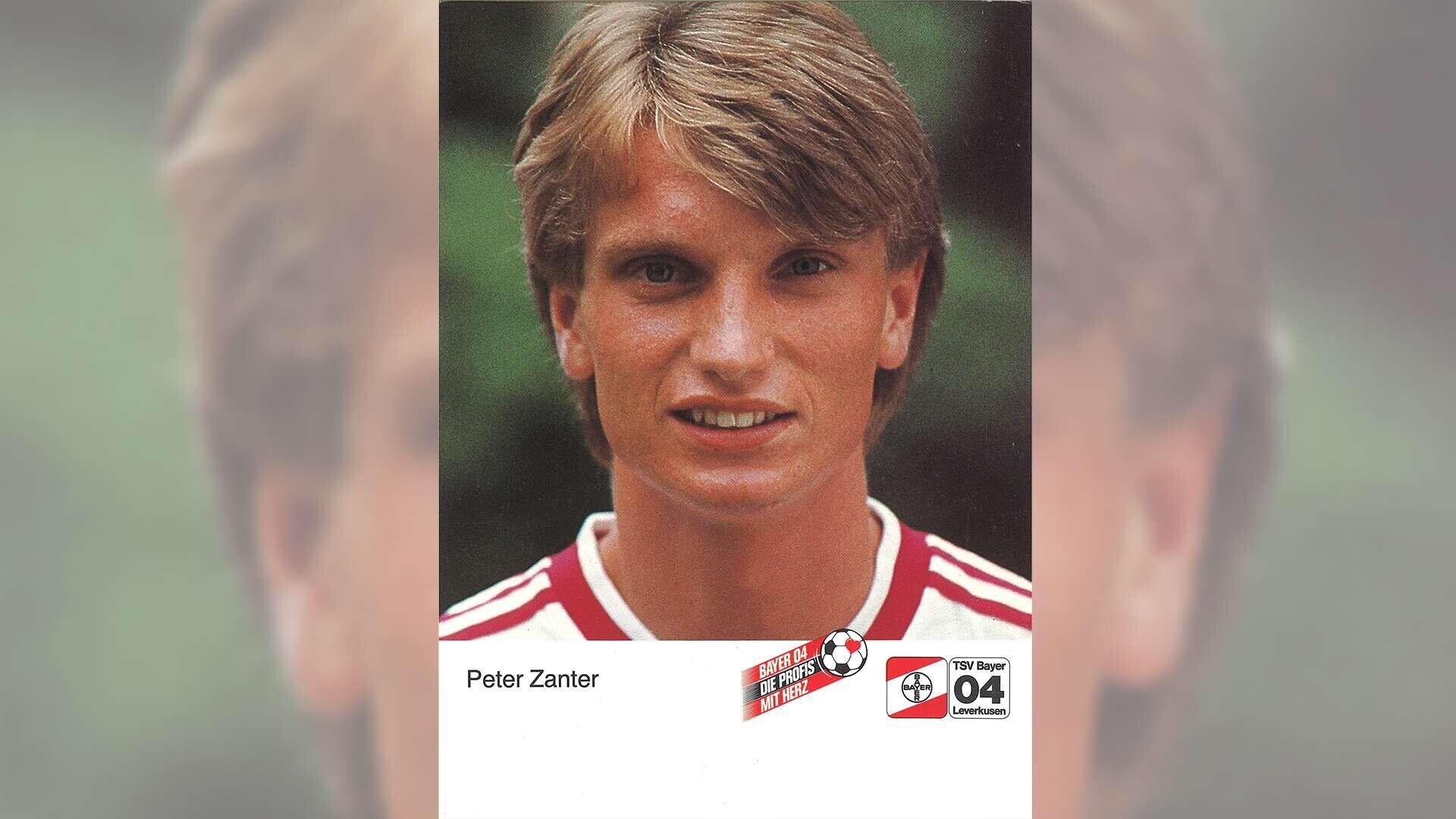
Birthday boy of the month 1: Peter Zanter turns 60
Peter Zanter was born on 11 November 1965 in Wermelskirchen in the Rhineland. His passion for football was evident from an early age: As a child, he played enthusiastically for the youth teams at SV Dabringhausen and SV Wermelskirchen. His ability and discipline did not go undetected for long - and he joined the youth section at Bayer 04 at a young age.
Show more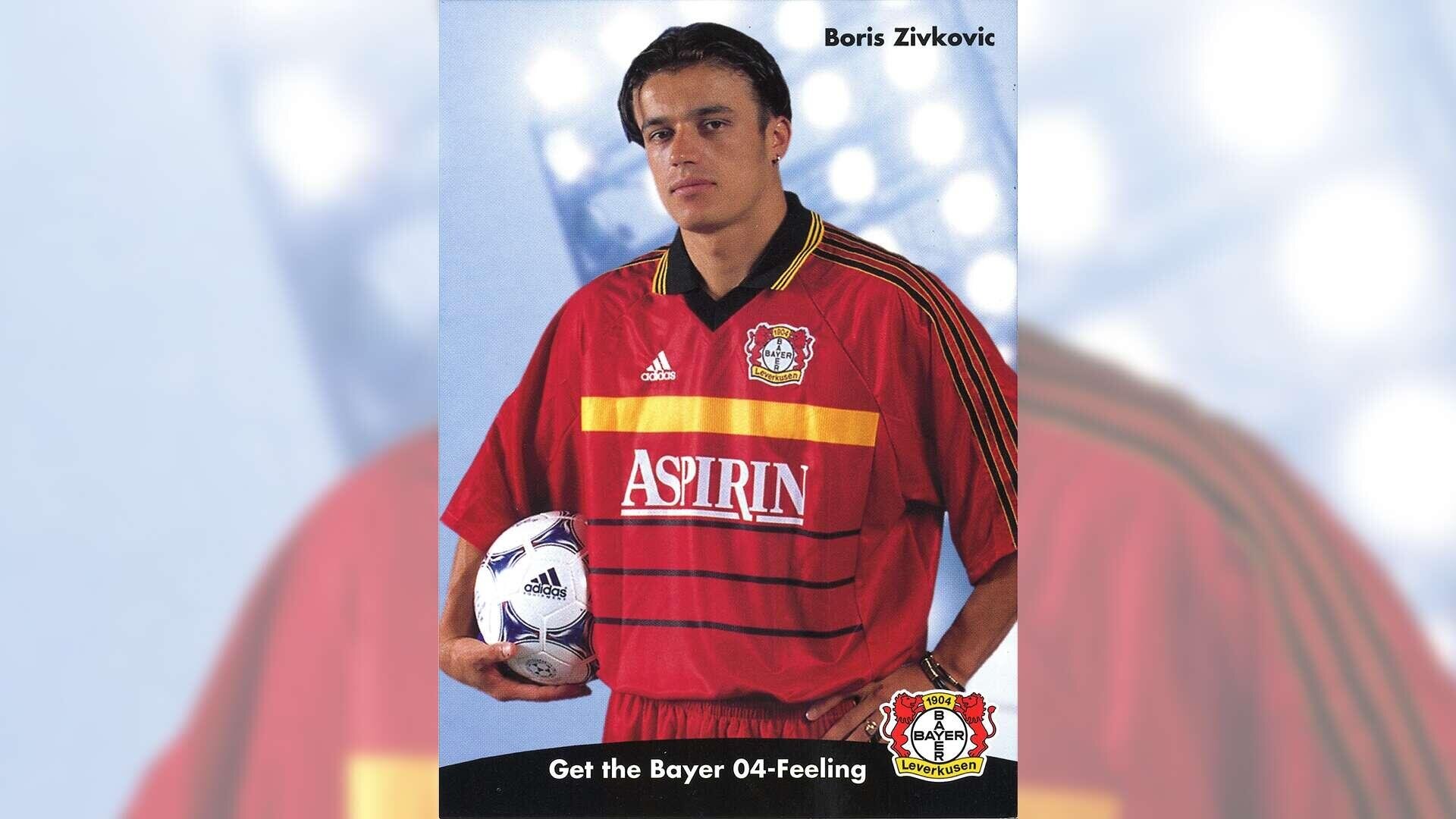
Birthday boy of the month 2: Boris Zivkovic turns 50
Boris Zivkovic was born on 15 November 1975 in the Bosnian town of Zivinice, which is now part of Bosnia and Herzegovina. He played for FK Sarajevo at a young age. However, his youth was characterised by the turmoil of the wars in the former Yugoslavia. At the age of just 17, he was also called up and took part in the fighting - a fate shared by many young men of his generation.
Show more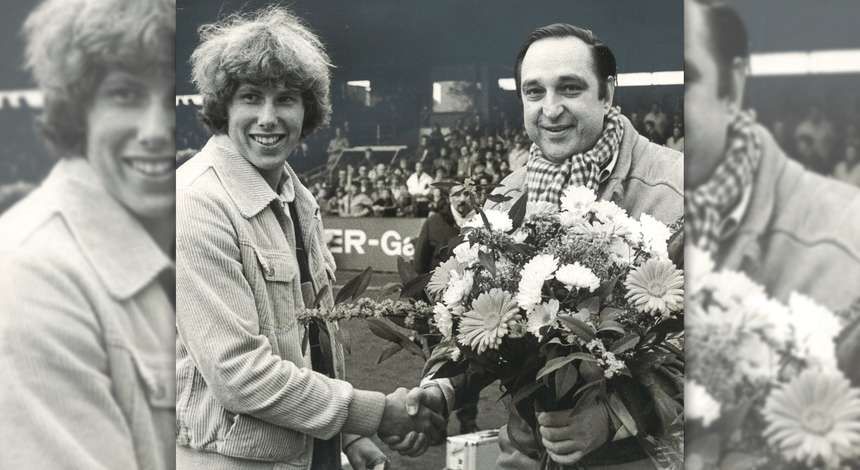
Legends: Under the Cross for 44 years
For once, this is going to be about me. About my path into football, my years as a goalkeeper at Bayer 04 and my ‘career after my career’ at this great club. So, come with me on a little journey through time...
Show more
Match of the month: 40 years ago - Bayer 04 hit the jackpot
It is 1 November 1985, a Friday evening, floodlights on. The leaders Werder Bremen with their coach Otto Rehhagel come to the Ulrich Haberland Stadium. 15,000 spectators want to watch this top match, as the Werkself, with their new coach Erich Ribbeck, are in fourth place in the table, just five points behind the leaders.
Show more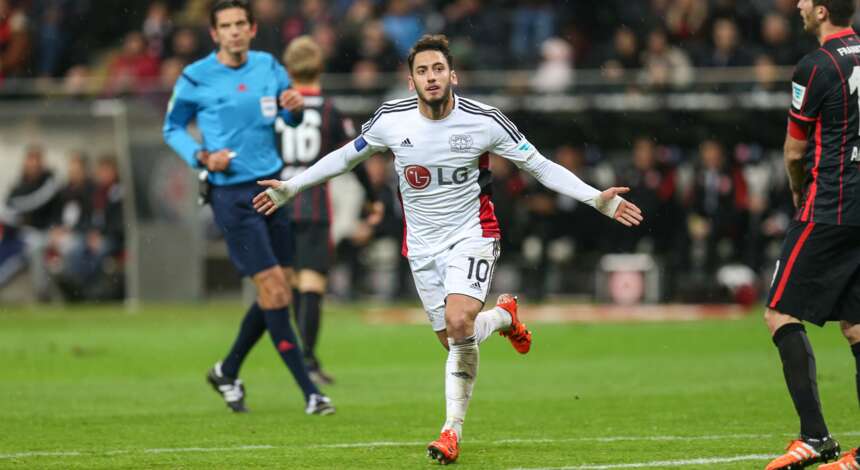
Goals of the month: From Demuth to Calhanoglu
In the video you can see impressive and important goals in Bayer 04 history from the month of November. It's not always about the beauty of the goals, but also a reminder of special games and players.
Show more